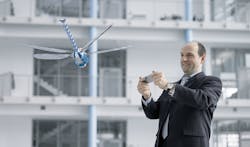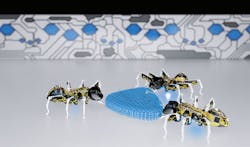At Festo, Automation Leads to Corporate Innovation
As companies grow, it can be increasingly difficult to be flexible and stay innovative. Often, engineers are split between day-to-day obligations. As a result, special projects to keep up with innovation get pushed aside or are done poorly. To avoid this trend, Festo created a unique employee development program 11 years ago. The bionic learning network challenges and improves the engineer’s knowledge and abilities. As a bonus, the technology from these projects often makes it into new products. With the skills gap steadily growing, companies could use development programs such as this one to better their employees and products. Here are some key points and goals from that program:
- Work in Small Groups
Big corporations can become slow to innovate because there are too many people involved or too much red tape. By selecting small groups and giving them a place and the freedom to tinker, companies can enable projects to iterate faster. Plus, they don’t have to be afraid of failing. Companies, and teams, must have self-confidence, courage to fail, patience, and a high frustration and risk tolerance. A small group with freedom is more flexible and can move quickly toward innovation and new ideas. In addition, it can leave the majority of the company’s team to continue running day-to-day operations and push toward more mass-production goals.
- Find Inspiring Role Models
Companies like Festo have found inspiration in nature and animals, while others may have an inspiring leadership, such as Apple or Space X. Either way, the small group needs inspiration. This gives the employees a motivation to work hard. If this is just another project for them to do so they can collect a paycheck, there won’t be much innovation.

